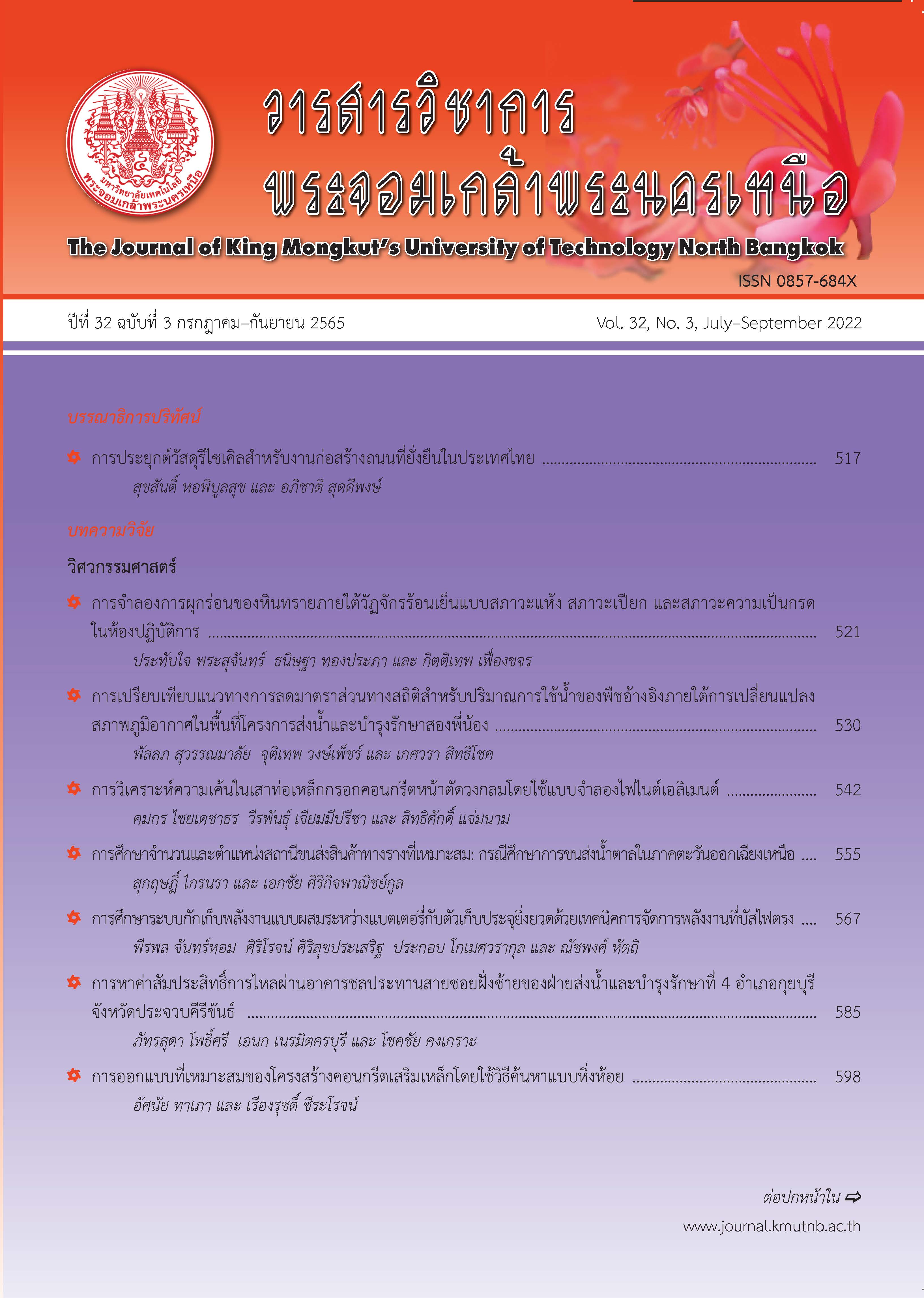Impacts of Experimental Express Operation on Level of Service Improvement: A Case Study of MRT Blue Line between Hualamphong and Bang Sue Junctions
Main Article Content
Abstract
This research is aimed at investigating the impacts of experimental express operation on level of service improvement of MRT Blue Line between Hua Lamphong and Bang Sue Junctions during the morning rush hour (7:00 to 8:00 am) and the evening rush hour (6:00 to 7:00 pm) on working days, Monday through Friday when the MRT system typically works in conjunction with crush loading conditions. The simulation of hybrid operation, i.e. the express operation in the peak direction and normal operation in the other direction, is investigated on the study route using the same number of transit units as normal operation, precisely 19 and 18 trains in the morning and evening peak hours respectively. The study explores the feasibility of operation plan improvement to enhance service levels through reducing passenger density inside the trains and lessening operating time during the peak hours. It is found that the express operation not only diminishes the passenger density but also reduces the operating time between the terminals in the morning and evening peak hours. In the morning peak, the passenger density on local and express line reduces by 23 and 15 percent respectively, in comparison with those of the normal operation. In the evening peak, the passenger density on local line increases by 11 percent but does not exceed the line capacity whereas the passenger density on express line decreases by 31 percent. In addition, the express line can save passenger travel time by 11 minutes (32%) and 9 minutes (26%) in the morning and evening peaks. However, some passengers on the local line of the express operation will experience a longer waiting time at the local stations due to longer headway operation.
Article Details

This work is licensed under a Creative Commons Attribution-NonCommercial-NoDerivatives 4.0 International License.
The articles published are the opinion of the author only. The author is responsible for any legal consequences. That may arise from that article.
References
L. Zhujun, M. Baohua, B. Yun, and C. Yao, “Integrated optimization of train stop planning and scheduling on metro lines with express / local mode,” IEEE Translations and Content Mining are Permitted for Academic Research, vol. 7, pp. 88534–88546, 2019.
D. Sunduck, Y. Keun-Yul, L. Jae-Hoon, A. Byung- Min, and K. Jeong Hyun, “Effects of Korean Train Express (KTX) operation on the national transport system,” in Proceedings of the Eastern Asia Society for Transportation Studies, 2005, pp. 175–189.
Y. Xueqiao, L. Maoxiang, G. Yang, W. Kai, S. Ching-Hsia, T. Sang-Bing, H. Mingkun, Y. Xiao, and L. Shiqi, “An empirical study on the design of China high-speed rail express train operation plan-from a sustainable transport perspective,” Sustainability, vol. 10, no. 7, pp. 1–19, 2018.
P. Chograthin and A. Sirikijpanichkul, “Delays in railway operations and suggested remedies for Airport Rail Link system,” presented at the 24th National Convention on Civil Engineering, Udonthani, Thailand, July 10–12, 2019 (in Thai).
Bangkok Expressway and Metro. (2018, Jan.). M.R.T Chaloem Ratchamongkhon Line. [Online] (in Thai). Available: http://metro.bemplc.co.th/MRT-System-Line?pid=3&lang=th
V. R. Vuchic, Urban Transit Operations Planning and Economics. Hoboken, NJ, USA: Wiley, 2005.
Mass Rapid Transit Authority of Thailand, “MRTA Report,” Bangkok, Thailand, 2019 (in Thai).

